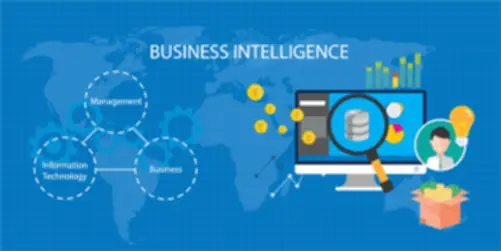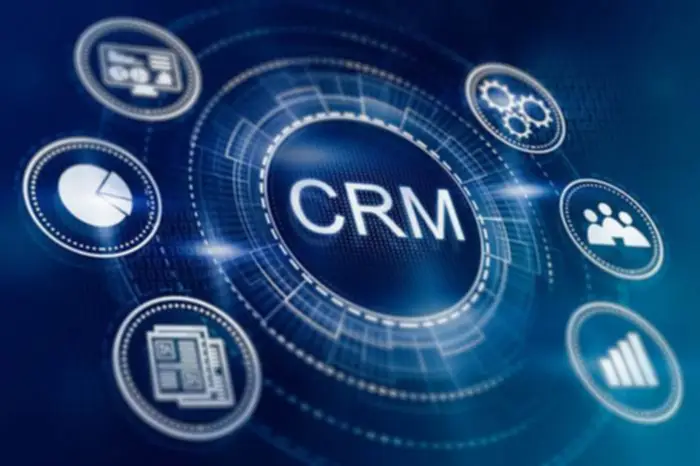Read how generative AI is expected to be the most influential development permeating the whole monetary services sector of 2024 and other expected developments. IBM’s hybrid cloud and AI capabilities help banks transition to new working fashions, embrace digitalization, and sensible automation and obtain continued profitability in a brand new era of business and retail banking. It’s necessary for the transformation staff to put out their business and technical objectives and understand what they want to acquire from the transition. For example, over the previous three years, Strategy Skippers grew their market share by an average Large Language Model of 4.6% per year, while Advanced Strategists and Frontrunners grew their market share by 6.0% and 6.7%, respectively. Similarly, over the identical interval, Strategy Skippers grew complete enterprise value by a median of three.2% per 12 months, while Advanced Strategists and Frontrunners grew complete enterprise worth by 5.4% and 6.1%, respectively.

Innovation Technique: Creating Your Fintech Strategy
For example, the Department for Work and Pensions needs to ensure it pays the proper benefits to claimants, which means figuring out the claimants’ tax status (HMRC), and residence status (Home Office). Meanwhile, the Ministry of Housing, Communities and Local Government wants to know which areas qualify for investment initiatives and requests the same knowledge plus enterprise earnings info from HMRC and the Department for Business and Trade. Regulated entities engaged in Virtual Currency Business Activity could digital finance transformation submit to DFS a self-certification policy, pursuant to guidance DFS issued in November 2023.
Starting A Sticky Chapter In The Evolution Of Digital Banking
- This is where collaboration with numerous companions, data suppliers, and clients can help.
- Digital transformation is less about revolutionary technology than it’s about changing the way companies work.
- This people-centered approach ensured that technological changes translated into actual, practical enhancements in every day operations.
- They highlighted how information, synthetic intelligence, and collaboration shall be crucial for setting and attaining environmental, social, and governance (ESG) targets within the monetary sector.
- Unlike traditional core banking techniques, Mambu adopts a composable strategy, allowing establishments to select and deploy solely the features they want.
This perception has significant implications for Late Adopters that must get their digitization underway, and for Strategy Skippers that desperately have to course correct provided that their current strategy to digitization is yielding such poor outcomes. Even though their digitization efforts focus on speedy talent building (agile ways of working, and so on.) to unlock the worth of enterprise use cases, they carry out poorly across a variety of metrics. They constantly path both teams of Digital Strategists and often Late Adopters as properly.
Global Market Survey: Digital Technology And The Future Of Finance Survey

Whether you’re in non-public fairness, hedge funds, or mutual funds, we can help. Our Banking & Capital Markets specialists might help by working with you to anticipate challenges, as properly as develop and implement methods that handle regulatory reform, technological complexity, competitive dynamics, and the shift toward a better bottom line. Furthermore, the COVID-19 crisis is placing immense stress on know-how capabilities (e.g., remote working, new cyber-security threats) and requires CIOs to anticipate and prepare for the “next normal” (e.g., accelerated shift to digital channels).

Why Datadog For Finance And Banking
Today, we work carefully with purchasers to embrace a transformational approach aimed at benefiting all stakeholders—empowering organizations to develop, construct sustainable competitive benefit, and drive positive societal impression. This group (16% of the surveyed group) has largely bypassed defining a digital strategy and instead instantly began investing in digital applied sciences and employee capabilities. They implement digital use circumstances opportunistically, typically with no clear enterprise rationale. Lacking a target picture to information them, Strategy Skippers can’t successfully scale their efforts.
IBM brings the technical expertise, strategic insight and dedication essential to help authorities achieve its digital transformation goals. Furthermore, trendy digital transformation is much less of a project and extra of a process, thriving on iterative approaches with constant adaptation. The pressure between traditional project-based planning and the desire for agility has but to be resolved. Traditionally, administration and programme budgets that cowl operational expenditure have been under probably the most pressure. However, the street to modernising these providers is fraught with challenges, beginning with the difficulties brought on by operating multiple, independent systems throughout authorities organisations, each with its systems and processes. None of us knows for sure what the longer term will hold, however we all have a accountability to be excited about what’s likely to occur, and to organize for it.
Jonathan is a principal in the Financial Services apply of Deloitte focused on Customer Strategy & Applied Design and lead for Deloitte Digital’s Applied Innovation offering. He brings 20 years of expertise consulting organizations on varied technique tasks and transformation packages, including those for growth strategy, buyer segmentation, customer expertise design, digital transformation, and innovation. Many major monetary providers corporations say they’re working with these purchasers to identify expertise use instances that can cut back environmental impacts. Their present environmental and social risk management (ESRM) policies ought to have established pointers for due diligence when managing such risks.
They will wish to manage all their finances—not just one component—in one place, on the units convenient to them. EbankIT is an omnichannel digital banking platform designed to assist financial establishments ship seamless and consistent customer experiences throughout all channels, including mobile, net, department, and wearables. It bridges the hole between legacy systems and trendy digital services, enabling banks and credit score unions to innovate rapidly and stay competitive. Microsoft Power BI is a enterprise intelligence and information visualization software that helps financial establishments rework uncooked data into actionable insights.
Financial establishments use Power BI to uncover trends, monitor key performance indicators (KPIs), and make data-driven decisions. Business course of intelligence instruments from SAP help SCB analyze and optimize processes, identifying inefficiencies and areas for improvement throughout its digital transformation journey. At the end of the day, the success of a digital transformation boils down to user expertise. If the technology is solving issues by permitting people to claim effective management and bettering the decision-making course of, it has achieved its purpose. Evolving buyer expectations—as nicely as growing competitors for his or her time and attention—have left many institutions scrambling to evolve antiquated enterprise models, prioritize the customer expertise, and invest in customerfacing options.
In the finance function, which means working now to get the best individuals and know-how in place to take benefit of the inevitable disruption forward. That’s not prone to occur with no clear imaginative and prescient and technique for finance in a digital world. Now is the time to step again and make sure your roadmap to that future is evident.
It supplies an built-in setting for designing, debugging, testing, and monitoring APIs. Its intuitive interface and powerful options make it the go-to alternative for API lifecycle management. Falk Rieker famous the significance of choices like the RISE with SAP and GROW with SAP options in facilitating the bank’s transition to the cloud, addressing regulatory necessities, and enhancing course of efficiencies. Ultimately, nevertheless, will in all probability be essential to assist all staff rethink the way they work, as the tip results of a digital transformation is the establishment of a company-wide agile operating mannequin. To ensure early efforts thrive and build momentum, firms ought to consider rigorously which projects to start out with and help them with the required resources. Prerequisites embrace a high-caliber launch team often led by a chief digital officer (CDO), consideration of organizational structure, and the nurturing of a digital tradition.
As a results of the confirmed and promising gains, financial providers corporations are making significant digital investments. More than half (65 percent) of all financial services organizations plan to increase spending by 10 p.c or extra (vs. 37 p.c for all organizations). Lower middle market corporations (83 percent), particularly, are planning hefty investments of 10 % or extra. With the newer shift toward automation, banks and monetary service suppliers have to modernize their banking methods.
They aren’t, after all, being requested to abandon the traits which have made them successful, however to renew their heritage with revolutionary methods of pondering and dealing (see “Building momentum for cultural change”). Brad Auerbach, US trade manager at Facebook, describes it as recalling what initially made them successful. For example, somewhat than making choices by contemplating the business case or what competitors are doing, insist that the beginning point is “How does this create value for the customer? ” Moreover, change can begin in areas where there are fewer risks—in advertising, for example, by testing messages and channels to find out what is handiest.
Transform Your Business With AI Software Development Solutions https://www.globalcloudteam.com/ — be successful, be the first!



















